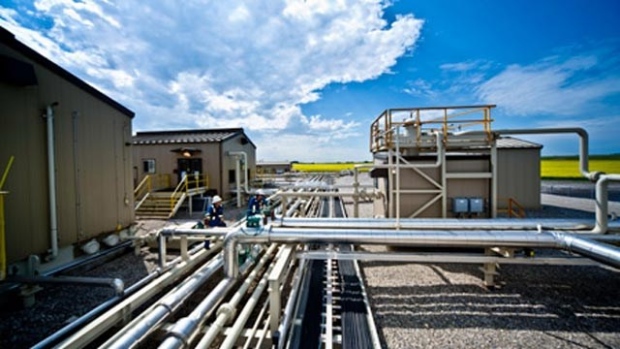Nov 8, 2017
Encana's profit slips 7% as production falls
Reuters

Encana Corp on Wednesday posted a third-quarter profit above analysts' estimates but 7.3 per cent below the same period last year as a result of lower production.
Encana (ECA.TO) also joined other producers in the country in hedging more of its future production, taking advantage of an eight-month high in crude prices and a weak Canadian dollar to lock in production for 2018 and beyond.
The company has hedged about 88,000 barrels per day of oil and condensate production next year at an average price of about US$53 per barrel, Chief Financial Officer Sherri Brillon said on a conference call.
That is about 70 per cent of its production and is "a prudent step to protect recent balance sheet improvements," Desjardins analyst Kristopher Zack said.
"However, this arguably softens the impact of further oil price gains, at least in the near term."
Calgary-based Encana, which produces gas and light oil, has benefited from a downsizing of its operations to focus on four core North American assets: the Montney and Duvernay assets in Western Canada, and the Eagle Ford and Permian assets in the United States.
While oil prices, now hovering around US$60 per barrel, began to rise late last year after a two-year slump, Encana had assumed the West Texas Intermediate benchmark would be at US$50 per barrel for its 2018 outlook.
Chief Executive Doug Suttles said the company will ramp up activity due to the increased cash flow from higher oil prices only if they are sustained over the long term.
Encana was "firmly" on track to meet its 2017 targets, he said.
Encana's net profit slipped to US$294 million, or 30 U.S. cents per share, in the quarter ended Sept. 30, from US$317 million, or 37 U.S. cents per share, a year earlier.
Analysts had predicted a profit of 6 cents per share, according to Thomson Reuters I/B/E/S.
The company's Toronto-listed shares were down 37 cents, or 2.3 per cent, at $15.94.
Total production fell to 284,000 barrels of oil equivalent per day (boe/d) from 338,000 boe/d a year ago, led by a 29 per cent fall in natural gas production. Liquids production rose 9 per cent.
Encana said production in the Permian basin in October averaged 80,000 boe/d, higher than its fourth-quarter target of 75,000 boe/d.
"We ... are particularly encouraged by the combination of strong productivity in the Permian and robust condensate rates," Raymond James analyst Chris Cox said in a note to clients.



